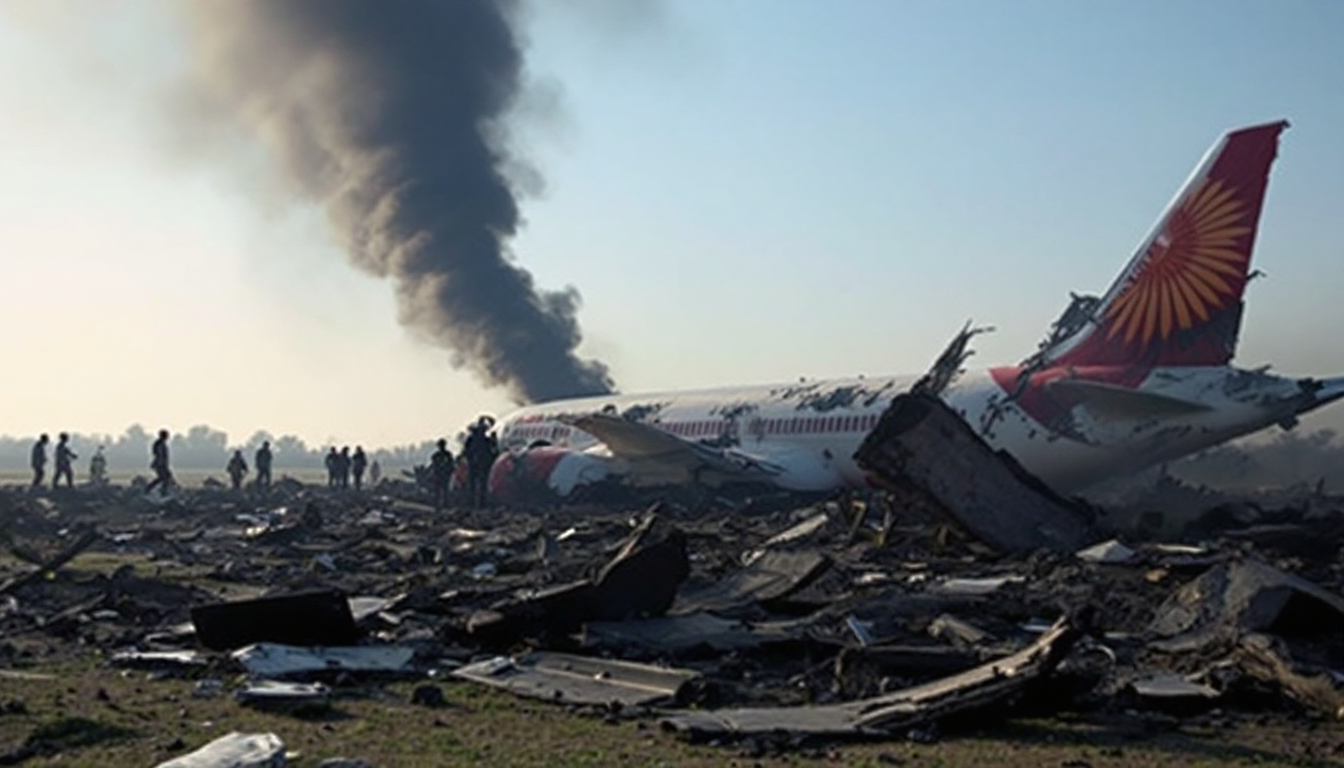Table of Contents
Imagine a serene day shattered by the deafening roar of a crashing airplane—a scene reminiscent of a disaster movie, only this time, it’s all too real. An Air India flight, a supposed marvel of modern aviation, plummeted from the sky, claiming 241 lives aboard and causing chaos on the ground.
As the dust settles, the only thing left is a gruesome reminder of human fallibility. Can you even begin to fathom the horror?
The crash: A timeline of chaos
The Boeing 787-8 Dreamliner was supposed to be a smooth ride from Ahmedabad to London Gatwick, carrying 242 passengers.
Instead, it turned into a death trap shortly after takeoff, crashing into a medical college hostel. Who would have thought that a routine flight could spiral into such a catastrophe? As investigators scramble to piece together the wreckage, we are left to wonder about the negligence that led to this tragedy.
So far, one of the black boxes has been recovered, but it feels like a cruel joke. How can a tiny piece of data provide solace to the families grieving their loved ones? It’s not just numbers; it’s lives snuffed out in an instant.
Reports indicate that 81 bodies have been recovered, but what about those still missing? Are they just statistics now?
Survivor stories: A glimpse into the horror
Among the wreckage, there’s a glimmer of life—Viswashkumar Ramesh, the sole survivor, recounts his tale of survival.
Can you believe it? While others were trapped in their seats, he somehow managed to escape, stumbling out of the wreckage with burns and injuries. The sheer luck of it all! He describes how the plane felt like it was stuck, lights flickering and panic setting in.
How many more were not so fortunate? What does it say about our so-called advancements in aviation safety?
As if that wasn’t enough, the crash claimed the life of Vijay Rupani, Gujarat’s former chief minister. His death adds a layer of political tragedy to an already devastating situation. What a way to go out—caught in the chaos of a malfunctioning aircraft. The passengers included 217 adults, 11 children, and two infants. It’s a staggering number, isn’t it? Who were they? What dreams did they take with them?
The aftermath: Grief and chaos
In the wake of the disaster, families gather outside hospitals, their faces etched with despair. Bodies of four medical students who were on the ground have been released to their families. Can you even imagine the anguish? At least 30 students were admitted to hospitals, with some in critical condition. It’s a scene that could bring even the toughest to their knees.
Witnesses described hearing a blast before dark smoke engulfed the area. Nitin Joshi, a local resident, likened it to a massive explosion. Is this what progress looks like? A city left in ruins, families torn apart, and an aviation industry that seems more interested in profits than safety? It’s almost as if we’ve traded our humanity for the convenience of air travel.
Looking ahead: Questions without answers
Boeing, ever the corporate giant, has promised to send experts to assist in the investigation. But will it be enough? The crash marks the first fatal incident involving a Dreamliner since its inception. Is this the beginning of a new chapter in aviation safety, or just another blip on the radar? The Aircraft Accident Investigation Bureau is now involved. But what can they really uncover that the families don’t already know—their loved ones are gone, and no amount of investigation will bring them back.
As we grapple with the aftermath of this tragedy, the question remains: what will it take for true accountability in the aviation industry? Will it take more lives lost before we see real change? Or are we destined to repeat the same mistakes, over and over, like some twisted version of déjà vu? Perhaps we need a scandal, a scandal that forces us to confront the ugly truth about the aviation industry. Until then, we wait in a state of disbelief, a nation mourning its losses.





